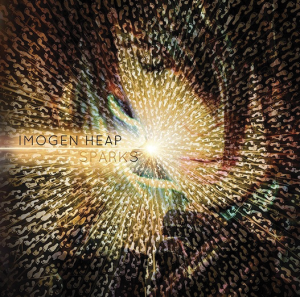
Imogen Heap’s newest album, “Sparks,” features tracks with her signature sound.
★★★☆☆
Five years may have passed since the release of her last full album, but as this new work shows, Imogen Heap hasn’t changed a bit.
“Sparks,” her newest release, features the same beat-heavy tracks with short, pronounced hooks that first made her popular in the mid-2000s.
This deluxe version of “Sparks” comes after the original version’s release in July and expands on Heap’s sound with instrumental versions of each song. These instrumental versions, which are not to be missed, provide a venue to showcase her incredible melodies and songwriting ability, allowing you to appreciate the original versions of the songs even more.
No one song on “Sparks” stands out; there’s no instantly powerful song like “Hide and Seek,” the 2005 track that gained Heap immediate success. Nonetheless, highlights on the album include “You Know Where to Find Me,” the opening track, “The Listening Chair” and “Lifeline.” These three tracks demonstrate Heap’s signature hooks. The songs contrast the upbeat, building melodies with her slow, rhythmic voice, seamlessly melding the two. The enchanting layers of vocals that flow throughout “The Listening Chair” create a musical sound that somehow manages to draw together choir-like vocals with a thoroughly modern electronic method of production.
While it may be on the slower side, “You Know Where to Find Me” is one of those songs you can immediately sing along to. The toning down of the instrumental and vocal layers allows you to really hear the more vulnerable side of Imogen Heap’s vocals. It is undoubtedly easier to listen to than “The Listening Chair,” whose winding five minutes of lyrics and clashing melodies take much longer to comprehend but is still worth the effort.
“Lifeline,” the first single off the album, brings to the table a catchy chorus with its punctuated and even overly pronounced words. This combination of song type on one album is a testament to Heap’s musical versatility and ongoing experimentation with her artistic abilities.
The only song resembling what you might hear on the radio today — and this album’s most popular track — is “Run-Time.” Imogen Heap trades her normally slower vocals for faster ones, achieving almost-danceable music. Though the song may be more radio ready, it’s less Heap and more generic, which will probably disappoint her original fans; you’ll want to listen to it once, for sure, but it may not have you rushing for the repeat button.
While “Run-Time” succeeds at least in part, “Sparks” has its fair share of flops. “Telemiscommunications,” her duet with deadmau5, falls flat. The track, which was originally included on deadmau5’s 2012 album “> album title goes here <,” seems boring when compared to the album’s highlights. It’s a disappointing result for a collaboration that should have produced some exciting new music. Other tracks that aren’t Heap’s best work include “Neglected Space” and “Cycle Song.” The whispering vocals of “Neglected Space” never reach an exciting peak like her other songs are normally able to do, and they just leave you wanting more. The barely there vocals on “Cycle Song” with almost indistinguishable words leave you wishing she would enunciate more, even though it does showcase an unexpectedly twangy melody that’s not usually heard in Heap’s music.
While not all the songs on “Sparks” are perfect, there’s enough old school Imogen in them to bring you back to middle school and make them worth a listen. In fact, there’s so much same old, same old, you actually end up wishing she would have branched out a bit more and introduced some new sound to her music. Still, these songs guarantee a certain longevity — much like the rest of Heap’s catalogue — and can remain on your playlist for years to come.














